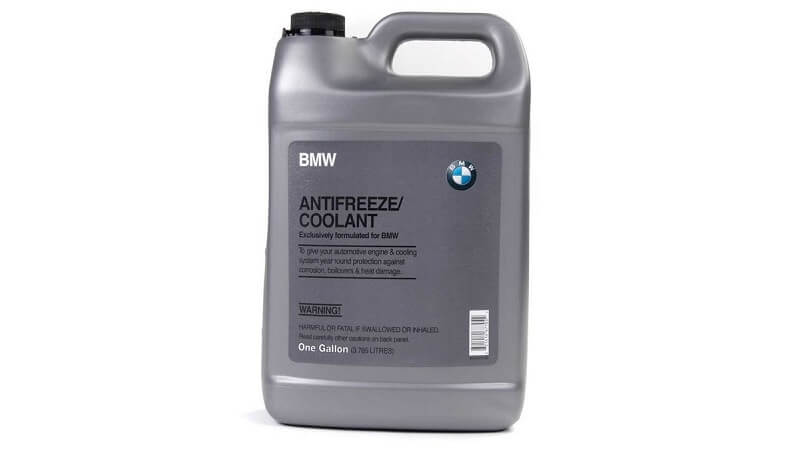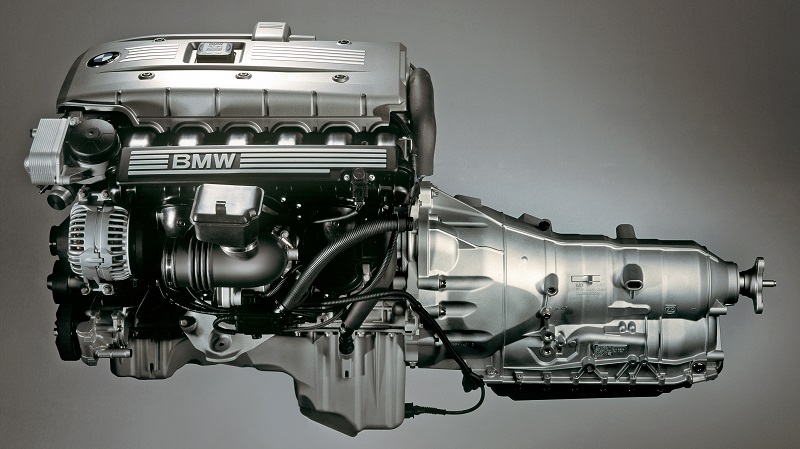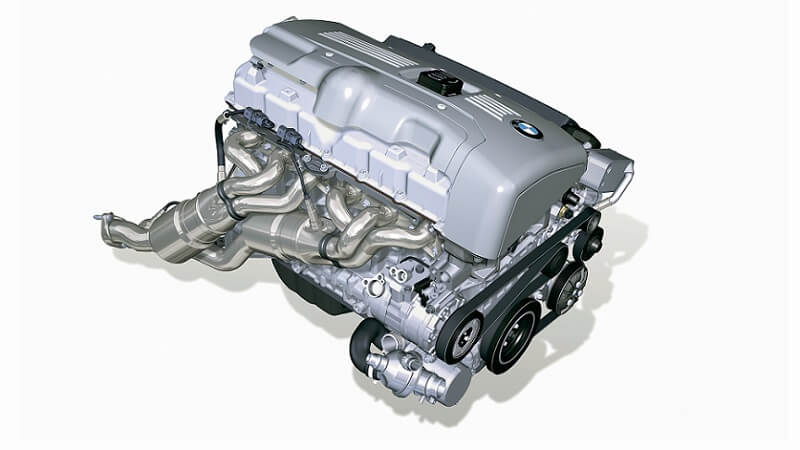The BMW E60 is the fifth generation of the German manufacturer’s 5-Series executive line of cars. It made its debut in 2003 and was met with quite a bit of criticism. Enthusiasts were disappointed by the new direction that BMW seemed to be heading in, mainly because it replaced the beloved E39 M5. However, the E60 went on to become one of the highest-selling BMW cars in the U.S. and is quite popular in the used car market today.
In this guide, we’ll take a look at how that transition happened, what makes this car special, but we’ll also discuss some of its less than colorful aspects. If you’re looking to buy a used E60, this guide will also help you narrow down on which model year and variant to choose, as well as the best engine and gearbox combo for your driving needs.

BMW E60 — A Controversial Design
One aspect that split the masses’ opinion on the E60 right down the middle was its design. When it made its debut in late 2003, one thing was immediately apparent; you either admired the styling of the E60, or you found it highly unappealing. Interestingly, there’s a fascinating yet unfortunate story about the car’s design.
BMW started working on the E60 way back in 1997. At the time, Chris Bangle was Chief of Design at the BMW Group. When the public first caught sight of the E60, they pointed their fingers at Bangle and blamed him for the design. Although Bangle ran the design division and ultimately green lit E60, he wasn’t the man behind the creation of the E60. The credit for that goes to Davide Arcangeli. Only 28 years old at the time, Arcangeli was the young designer who put pen to paper and conceptualized the exterior silhouette of the E60.
Even if just on paper, designing a car is a time-consuming, excruciatingly painstaking process that goes through several changes and alterations. Sadly, just months after putting forth his design to BMW, Arcangeli was diagnosed with leukemia and passed from the disease in late 2000. The E60 would go into production only three years later. Still, rumor has it that Chris Bangle and senior management from BMW decided not to make any significant changes to the car’s design to honor the memory of Arcangeli.
In the years that followed, Bangle praised Arcangli’s forward-thinking ability, and when you look at how much the design fits in with today’s cars, one couldn’t agree more.
A Step In A New Direction?

The E60 was a significant step up from the E39 for what it had to offer. It came with added electronic features, like BMW’s iDrive infotainment system, a head-up display, adaptive headlights, active cruise control, and a lane departure warning system. The 535i that debuted in 2007 was the first 5-Series to feature a turbocharged engine, and the E60 M5 was the first (and only) M5 to be powered by a V10 engine (we’ll take a look at both these models in more detail further below)
Body Styles
The E60 comprised two body styles — a sedan (E60) and a wagon, or what BMW refers to as the ‘Touring’ (E61). The E60/E61 is often collectively referred to as the E60.
There was also a Long Wheelbase (LWB) iteration of the car; however, this was manufactured solely for the Chinese market, and we never got to experience it in the U.S. Similarly, BMW also manufactured an E61 M5, which it sold only in Europe.
Available Powertrain Options

Over its lifetime, the E60 was powered by multiple engines. It was first introduced with the M54 inline-six that powered its predecessor, the E39. This engine made its way onto the 520i, 525i, and 530i models. The E60 range would eventually grow to include multiple inline-4 and inline-6 gasoline-powered models, including the 523i, 528i, 535i, 540i, 545i, 550i, and the iconic M5. There were a few diesel models on offer as well, including the 520d, 525d, 530d, and 535d.
It’s worth noting that not all models mentioned above made their way to the U.S. market. Cars like the 520i, 523i, and the 520d, for instance, weren’t sold in America. That said, to keep you informed on what each of them had to offer, here’s a list of all the engine and gearbox options that the E60 was sold with:
Petrol
- 2003–2005 2.2L inline-six M54 in 520i, producing 168 hp at 6,250 rpm and 155 lb-ft of torque at 3,500 rpm
- 2003–2005 2.5L inline-six M54 in 525i, producing 189 hp at 6,000 rpm and 175 lb-ft of torque at 3,500 rpm
- 2003–2005 3.0L inline-six M54 in 530i, producing 228 hp at 5,900 rpm and 221 lb-ft of torque at 3,500 rpm
- 2003–2005 4.4L V8 N62 in 545i, producing 329 hp at 6,100 rpm and 332 lb-ft of torque at 3,600 rpm
- 2005–2010 2.5L inline-six N52 in 523i, producing 174 hp at 5,800 rpm and 170 lb-ft of torque at 3,500 rpm
- 2005–2010 2.5L inline-six N52 in 525i, producing 215 hp at 6,500 rpm and 184 lb-ft of torque at 2,750 rpm
- 2005–2010 3.0L inline-six N52 in 530i, producing 255 hp at 6,600 rpm and 221 lb-ft of torque at 2,500 rpm
- 2005-2007 4.0L V8 N62 in 540i, producing 302 hp at 6,300 rpm and 288 lb-ft of torque at 3,500 rpm
- 2005–2010 4.8L V8 N62 in 550i, producing 362 hp at 6,300 rpm and 361 lb-ft of torque at 3,400 rpm
- 2007–2010 2.0L inline-four N46 in 520i, producing 154 hp at 6,400 rpm and 148 lb-ft of torque at 3,500 rpm
- 2007–2010 3.0L inline-six N52 in 528i, producing 231 hp at 6,500 rpm and 199 lb-ft of torque at 2,750 rpm
- 2007–2010 3.0L inline-six turbo N54 in 535i, producing 302 hp at 5,800 rpm and 295 lb-ft of torque at 1,300–5,000 rpm
- 2005–2010 5.0L V10 S85 in M5, producing 500 hp at 7,750 rpm and 384 lb-ft of torque at 6,100 rpm
Note: In specific markets with low-sulfur fuel, BMW used the N43 on the 520i instead of the N46, and the N53 replaced the N52 in 2007. However, the U.S. didn’t fall under this category, so the cars sold here continued to be equipped with the N52 until 2010.
Diesel
The E60 made its debut with just one model, the 530d. Shortly after, the 525d was introduced to the range. Versions of the M57 straight-six engine powered both these cars. In 2005, BMW launched the 520d. It was the only four-cylinder diesel engine model in the E60 range and never made its way to the U.S. market.
- 2003–2005 3.0L inline-six M57 in 530d, producing 215 hp at 4,000 rpm and 369 lb-ft of torque at 2,000 rpm
- 2004–2007 2.5 L inline-six M57 in 525d, producing 174 hp at 4,000 rpm and 295 lb-ft of torque at 2,000 rpm
- 2004–2007 3.0L inline-six M57 in 535d, producing 268 hp at 4,400 rpm and 413 lb-ft of torque at 2,000–2,250 rpm
- 2005–2007 2.0L inline-four M47 in 520d, producing 161 hp at 4,000 rpm and 258 lb-ft of torque at 1,750–3,000 rpm
- 2005–2007 3.0L inline-six M57 in 530d, producing 228 hp at 4,000 rpm 369 lb-ft of torque at 1,750 rpm
- 2007–2010 2.0L inline-four N47 in 520d, producing 174 hp at 4,000 rpm and 258 lb-ft of torque at 1,750–2,500 rpm
- 2007–2010 3.0L inline-six M57 in 525d, producing 194 hp at 4,000 rpm and 295 lb-ft of torque at 1,300–3,250 rpm
- 2007–2010 3.0L inline-six M57 in 530d, producing 232 hp at 4,000 rpm and 369 lb-ft of torque at 1,750–3,000 rpm
- 2007–2010 3.0L inline-six M57 in 535d, producing 282 hp at 4,400 rpm and 428 lb-ft of torque at 1,750–2,250 rpm
Transmission Options
Over its 7-year production run, the E60 was available with multiple transmissions. They all came with a 6-speed gearbox in manual, automatic, and AMT guises, depending on which car it was a part of.
The M5 was the only exception as it came with a 7-speed AMT. Interestingly, a 6-speed manual was also available for the M5, just in North America.
BMW E60 Through the Years

As you’ve just seen, the E60 is quite the comprehensive lineup. Things can get a little confusing, considering there are so many of them out there. To make things easier, here’s a quick look at how the E60 panned out chronologically.
In our market, the E60 made its debut with the 525i, 530i, and the 545i. The 525i and 530i used iterations of the M54 inline-six from the E39, while the 545i featured a new 4.4L V8 engine called the N62. In 2005, the M54 on the 525i and 530i was replaced by a newer inline-six unit called the N52 — in different states of tune for both cars. It brought a notable bump in power and torque. In the U.S., this engine would continue to power the cars until 2010.
In the same year, the 545i also gave way to two new models — the 540i and the 550i. While both of them continue to be powered by versions of the N62 V8 engine, the 540i received a downsized 4.0L unit, while the 550i came with a massive 4.8L powerhouse. With the exception of the M5, the 550i was the most powerful car in the E60 range.
2007 Update
In 2007, the E60 generation underwent its Life Cycle Impulse (LCI), or midlife update. The exterior styling, which so many people had complained about, received some minor tweaks, including revised headlights and taillights and a new bumper design.
Changes to the interiors and technology were much more substantial; the post-LCI cars featured an updated iDrive system and introduced adaptive headlights, a lane departure warning system, adaptive cruise control, and more.
It was in this year that the only turbocharged E60 model was introduced. The 535i featured a twin-turbo inline-six N54 engine exclusive to the North American market.
BMW E60 M5 — the Only V10 BMW M5

The M5 (E60) is probably the most iconic sports sedan to wear the BMW badge. Why? Primarily thanks to the behemoth of a 5.0L engine that lay under its hood. The S85, as BMW called it, was the German manufacturer’s first and only V10 on an M5. In fact, the only other street-legal BMW powered by a V10 was the E63 M6, which used the same engine.
Unlike previous generations of the M5, where the engines were typically high-performance
versions of another standard engine, the S85 was built from the ground up by the M Division. At the time, BMW built engines for the Williams F1 team, and when it came to putting together a new powerhouse for the M5, they simply used that engine as a base. The product was a naturally aspirated V10 producing 500 hp at a stratospheric 7,750 rpm and 384 lb-ft of torque at 6,100 rpm. Even by today’s standard, let alone nearly two decades ago, those are some impressive numbers.
While the E60 M5’s design resembled the standard E60 5-Series to some degree, the team at M GmbH made some cosmetic and functional tweaks that set it apart from its utilitarian siblings. For example, it featured more air intake panels on the front bumper, got wider wheel arches, and aggressive-looking side skirts.

The updates continued to the interior as well. The M5 featured sportier elements throughout, from a resigned instrument cluster, a three-spoke steering wheel, and M-Sport seats.
Over its five-year production run, BMW produced only about 20,000 units of the E60 M5. Luckily for us, the U.S. was its most successful market, where a little under 9,000 were sold. What’s even more remarkable is that BMW developed a 6-speed manual transmission for the M5 and just the U.S. market. Only a handful of these cars were sold, so getting your hands on one will be a lot harder than finding one with the standard 7-speed AMT. A silver lining is that the AMT-equipped M5 was a quicker car than the manual version.
Is the BMW E60 reliable?
Unfortunately, most of the E60 range is notoriously infamous for being quite unreliable. That said, there are some exceptions. The pre-LCI 525i and 530i featured the M54 engine, which was well put together. The post-LCI 525i, 528i, and 530i, powered by the N52, are also not as prone to problems.
It’s the larger V8 engines that were having the most issues. They make a lot more power than the inline-six engines on the E60 cars, but keeping them running can be pretty demanding and not to mention expensive.
BMW E60 Common Problems
We’ve listed out some of the most common problems you can face with an E60, so you know what to look out for if you’re in the market for a used one. Keep in this mind that this list is not exhaustive and is just some of the most frequently reported issues that owners have.
N52 Water Pump Failure
The N52 used an electric water pump, unlike its predecessors that used mechanical units. This brought multiple advantages, like enabling the ECU to regulate flow rate depending on driving style and how you were pushing the engine. That said, it was relatively new technology for the manufacturer, and the system was designed quite poorly.
There have been numerous reports of the water pump cracking and failing after 40,000 miles. This can result in unexpected engine overheating or steam from the radiator. If the water pump hasn’t failed yet, you can prolong its life by replacing the stock plastic impeller with a metal one.
N52 Hydraulic Valve Lifters
Another issue with the N52 was concerning the hydraulically adjusted valve lifters. This is most common with engines with high mileage, and owners have complained of a ‘ticking’ noise from the engine. If you’re looking at an N52-powered E60, try starting the engine when it’s cold — it’s when this noise is most prevalent. A ticking sound doesn’t necessarily mean there’s an issue with the valve lifters, but it’s still something you should get checked, nevertheless.
The cause of the problem was a poorly designed cylinder head and lifters. BMW rectified this issue on later iterations of the engine, but most E60 cars don’t fall under this category.
N62 Coolant Transfer Pipe Leak
One of the most common problems with the N62 is the coolant pipe leak. More often than not, it happens when the front seal of the coolant pipe is faulty. This issue is really bothersome because the coolant transfer pipe is hard to access; you need to dismantle the timing cover, timing chain, intake manifold, and cylinder heads. As a result, this will be a labor-intensive job that will take up a lot of time and money.
The leaking coolant drips out of the weep hole, which is located in the timing chain cover, and this is the easiest way to spot if there’s a leak.
N62 Valve Stem Seals
The V8 N62 engine employs a DOHC layout, resulting in a total of 32 valves. Each of these valves features a stem seal that keeps oil in the cylinder head from leaking into the combustion chamber. Unfortunately, on these engines, the stem seals were not made of a very durable material, and this caused them to deteriorate and fail.
As you can imagine, the consequences of this can be pretty problematic. Oil in the combustion chamber will result in added oil consumption, excess smoke, and irregular performance.
N62 Valve Cover Gasket Oil Leaks
Oil leaks are quite a common sight with the N62. The valve cover gasket is subject to extreme temperature cycles, and over time it can harden and crack, resulting in an oil leak. The easiest (and most straightforward) way to avoid this is to check them during regular intervals and replace them ahead of time.
If the valve stem seals that we just discussed were recently swapped out on a car that you’re looking at, it’s likely the valve cover gasket has been changed as well.
Interior and Exterior

The exterior of the E60 was quite solidly put together. One thing to look out for is the seal around the sunroof. Once worn out, it can cause quite a bit of wind noise and even rattle. Depending on the extent of damage, the entire sunroof might need to be replaced, so you should take a good look at this.
Several owners have also complained about the brakes on the E60 cars saying that they sometimes get tough to depress. The cause of this problem is primarily a faulty hose which leaks oil into the brake booster. If you want to avoid the risk of this happening, replace the brake booster, vacuum hose, and, if required, the master cylinder.
Which Version to Get?
The answer to this question is quite simple. If reliability is at the top of your requirements and you’re willing to compromise on performance, you should look at a used 525i or a 535i. We recommended looking at a post-LCI 530i, as it came with the largely reliable N52 and won’t cost you too much to buy or maintain.
On the flip side, if you want a screaming V8 engine and heaps of performance, the 550i is a great option. However, this will be a more problematic car, and it’s best that you have a little extra money kept aside to keep it running smoothly.
If money isn’t a factor, there aren’t too many cars out there that will get you the performance that the E60 M5 will. It’s one of the last, great naturally-aspirated engines and a remarkable example of the excellent performance sedans that BMW is capable of making.




